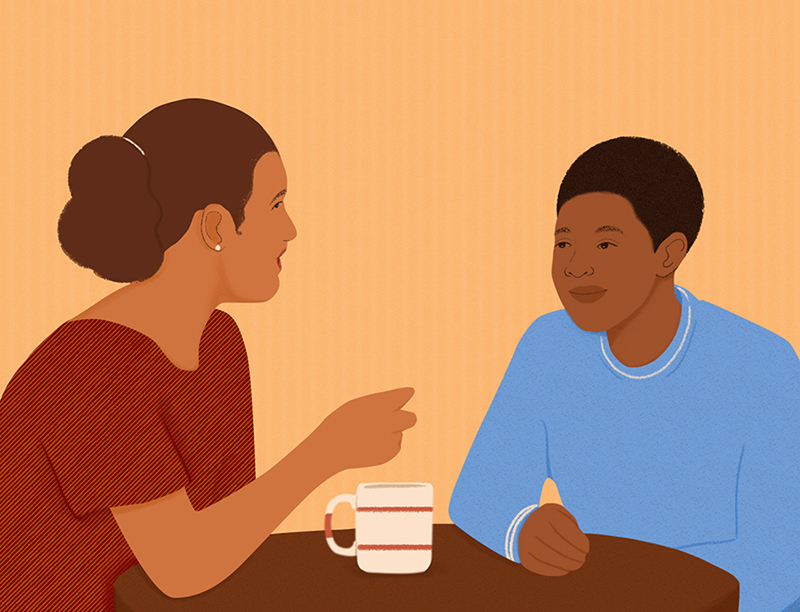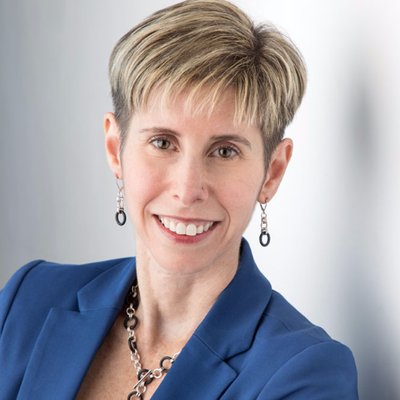Tune into a recent Hart House Stories podcast and you’ll hear students, educators and a social worker talk about the climate crisis. What should governments, corporations and individuals do? With all the alarming news, how do we manage our anxiety? The host is energetic and passionate. The group’s opinions are heartfelt. The person who wrote, produced, interviewed and made the music for the episode – Elijah Miller – is justifiably proud. And Miller is not a U of T professor, administrator or undergrad, but a Grade 12 student.
“I came up with questions, edited – everything,” says Miller, who got the opportunity through a program called Support, Engage, Experience U of T – or “SEE U of T” – which gives youth from historically under-represented communities a sense of what university is like. “It was super-awesome.”
Developed with the Toronto District School Board, and run by Woodsworth College since 2019, the program – which has recently expanded to cover all three campuses – invites local Grade 11 and 12 students to complete a first-year U of T course at no charge. Participants also do a co-op placement, receive mentoring from a senior-year undergrad and explore the university’s facilities and services. In the process, they earn two high school co-op credits plus a half-credit toward a university degree.
“This is about removing barriers that are created as a result of structural and historical inequities and creating pathways to post-secondary education,” says Ann Lopez, U of T’s provostial advisor on access programs. “Not only does U of T want to attract students who are traditionally under-represented, but we want them to see the university as a place where they belong.” (Lopez collaborated on the creation of the SEE U of T concept with Woodsworth’s then-assistant principal and registrar, Cheryl Shook, and principals and staff at the participating high schools, Runnymede Collegiate Institute and Downsview Secondary School.)
U of T has recently intensified efforts to create a more welcoming environment for Black students. In 2020, the university established the U of T Institutional Anti-Black Racism Task Force, whose report the following year made 56 recommendations to promote Black inclusion and excellence across the tri-campus community. The university has accepted all of the recommendations and implemented many of them; it continues to work on others.
We want under-represented students to see the university as a place where they belong.”
Participants in “SEE U of T” can choose from up to 16 courses. For help with assignments, they can turn not only to their course instructor and teaching assistant, but also to an academic advisor dedicated to their cohort and a learning strategist at Woodsworth’s Academic Writing Centre. Co-op placement options are available at up to 24 academic and administrative sites. U of T covers tuition fees and books, and the school board typically provides student supports such as bus tickets and meals.
The program “plays an important role in levelling the playing field for learning opportunities” and “contributes to a more inclusive society,” says Natasha Jesenak, director of access programs and registrarial services at Woodsworth. To date, more than 50 high schoolers across three cohorts have taken part. Fewer participated during the pandemic when activities moved mostly online, but the program will be fully in-person this fall.
U of T Mississauga piloted its own version of “SEE U of T” this past fall in partnership with the Peel District School Board and its two participating schools, Fletcher’s Meadow Secondary School and Meadowvale Secondary School. “SEE UTM” offers a course about critical thinking in science and technology. The students also pick up some valuable life skills.
“You learn how to manage your workload, and how to communicate if you’re falling behind,” says Grade 12 participant Abby-Gayle Isadora Allen. “I learned so much that I can apply to my future.”
Like St. George, UTM offered workshops in areas such as discovering your strengths, and personal finance. Participants were offered 20 hours of one-on-one mentorship by an undergrad. Mentor Tobi Mohammed, who was also the teaching assistant for the science and technology course, helped her mentees with skills such as time management, creating a LinkedIn profile and applying to university.
“We talked about their ambitions and goals, their personal struggles – we talked about everything,” says Mohammed, a fourth-year student in biology for health sciences. As someone who is Black, she adds, “I wish I’d had something like this in first year.”

This past winter, the access program became active across all three U of T campuses with the introduction of “SEE U of T Scarborough,” which is open to Black and Indigenous students from neighbouring schools. The U of T Scarborough version takes place over two semesters and provides the opportunity to earn five high school credits and a half university credit.
In their winter term of Grade 11, participants spend their afternoons doing their co-op placement at U of T Scarborough sites such as the library, the International Student Centre or The Hub, a startup incubator. When they begin Grade 12 in the fall, these same students return to campus to take a first-year course. They will also take part in learning sessions delivered by various faculties and student service units.
The program’s benefits will extend beyond post-secondary preparation for the participants, says Kyomi Hastings Duncan, associate registrar and director of admissions and student recruitment at U of T Scarborough. “The impact is going to reach into their households and the larger community.”
Jesenak at Woodsworth notes that at least 28 of the former participants have gone on to apply for post-secondary education, with eight accepting offers from U of T.
Elijah Miller is among that group of eight – he’s currently a first-year student at the St. George campus. While higher education was always part of Miller’s plan – both of his parents are university graduates – he says he had harboured doubts about how welcome he would be at a university. How does he feel now about being a university student? Good: “I’m wanted here – and I want to be here,” he says.







No Responses to “ New Paths to Success ”
Is this program only for Scarborough students or is it for all students in the Toronto District School Board?
@Sissi
Thank you for your message. The "SEE U of T Scarborough" program currently works with the following five Scarborough high schools:
--Albert Campbell Collegiate Institute
--Cedarbrae Collegiate Institute
--David & Mary Thomson Collegiate Institute
--West Hill Collegiate Institute
--Winston Churchill Collegiate Institute